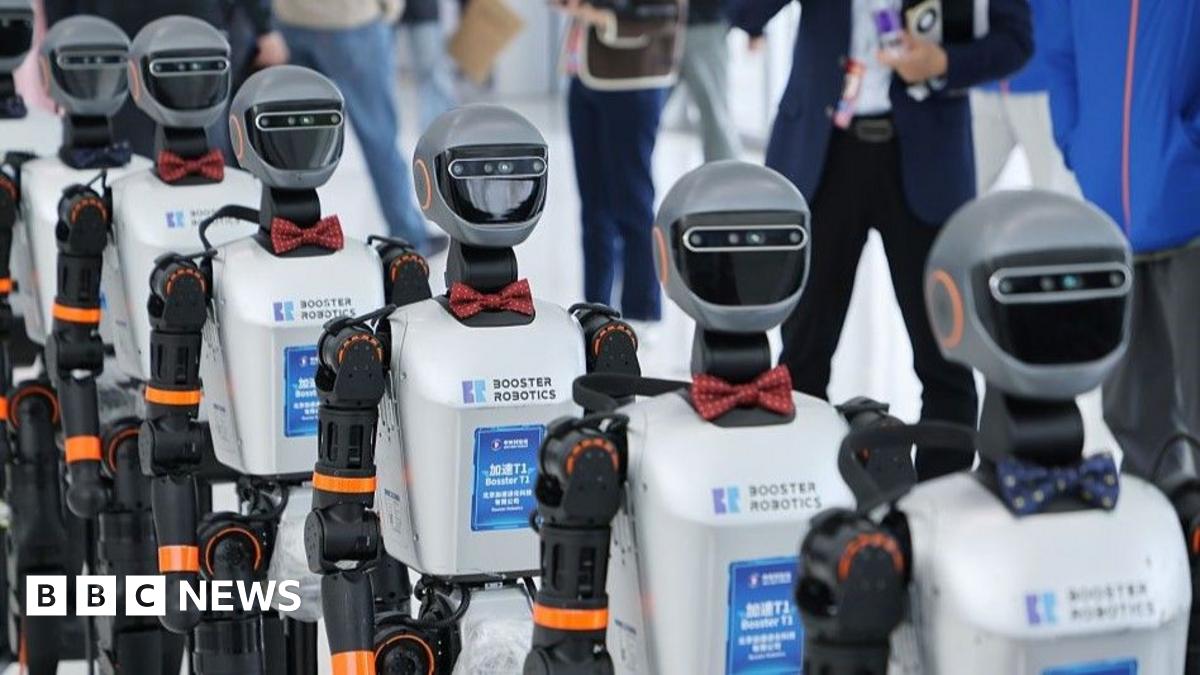Can U.S.Robotics Companies Compete? One Founder Bets on Simplicity and Asian Manufacturing
By Archyde News Service
The U.S. robotics industry faces increasing pressure from overseas competitors, especially those leveraging lower manufacturing costs in Asia. Bren Pierce, a Bristol-based entrepreneur and founder of three robotics companies, believes he has a solution. His latest venture, Kinisi, has launched the KR1 robot, designed for use in warehouses and factories. but can this approach truly allow American and European companies to stay in the game?
The Cost Conundrum: Manufacturing in Asia
While designed and developed in the UK, the KR1 will be manufactured in Asia. Pierce explains this decision is purely economic. “The problem you get as a european or American company,” he says, “you have to buy all these sub-components from China in the first place.”
He argues that shipping components across the globe only to assemble them in the West is inefficient. “So then it becomes stupid to buy your motors, buy your batteries, buy your resistors, shift them all halfway around the world to put together when you could just put them all together at the source, which is in Asia.”
This strategy reflects a broader trend. According to a 2023 report by the Brookings Institution, China holds a significant advantage in manufacturing due to established supply chains and lower labor costs. this presents a major hurdle for U.S. robotics companies aiming to compete on price.
Rethinking Robot Design: Function Over Form
Beyond manufacturing location, Pierce is also focusing on cost-effectiveness in the KR1S design. He’s deliberately avoided a full humanoid form, opting instead for a design optimized for specific tasks.
“All of these places have flat floors,” Pierce says, referring to warehouses and factories. “Why would you want the added expense of a very complex form factor… when you could just put it on a mobile base?” The KR1, therefore, is built for mobility and functionality within its intended environment.
This practical approach extends to component selection. “My philosophy is buy as many things as you can off the shelf,” Pierce explains. “So all our motors, batteries, computers, cameras, they’re all commercially available, mass produced parts.” The KR1 even uses electric scooter wheels, showcasing a commitment to readily available and affordable components.
The “Secret Sauce:” User-Kind Software
Pierce believes the key to success lies not only in hardware but also in software.”A lot of companies come out with very high-tech robots, but then you start needing a PhD in robotics to be able to actually install it and use it,” he says.”What we’re trying to design is a very simple to use robot where your average warehouse or factory worker can actually learn how to use it in a couple of hours.”
The KR1 is designed to learn tasks thru repeated human guidance. Pierce claims the robot “can perform a task after being guided through it by a human 20 or 30 times.” This ease of use could be a significant selling point for businesses looking to implement automation without requiring extensive specialized training.
However,some experts argue that while user-friendly software is crucial,it’s not enough. Dr. Ayanna Howard, Dean of Engineering at Ohio State university, emphasizes the importance of robust safety protocols and ethical considerations in AI-powered robots. “The focus on ease of use shouldn’t come at the expense of ensuring these robots operate safely and responsibly in human environments,” Howard said in a recent interview with *IEEE Spectrum*.
Pilot Programs and Future Prospects
Kinisi plans to deploy the KR1 to pilot customers this year for real-world testing. This phase will be crucial in validating the robot’s performance and identifying any necessary improvements.
pierce’s strategy of Asian manufacturing, simplified design, and user-friendly software represents a calculated attempt to carve out a niche in the competitive robotics market. Whether this approach will succeed remains to be seen, but it highlights the challenges and innovative solutions emerging in the face of global competition.
FAQ: Robotics in the Workplace
| Question | Answer |
|---|---|
| How can robots benefit my warehouse or factory? | Robots can automate repetitive tasks, improve efficiency, reduce errors, and enhance safety in various industrial settings. |
| What skills are needed to work with robots in a factory? | Basic computer skills, problem-solving abilities, and a willingness to learn are often sufficient. Companies typically provide training on specific robot models. |
| Are robots a threat to human jobs? | While some jobs might potentially be automated, robots also create new opportunities in areas such as robot maintenance, programming, and data analysis.The key is adaptation and reskilling. |
| How much does a warehouse robot cost? | The cost varies widely depending on the robot’s capabilities and complexity. Some models can be leased, making them more accessible to smaller businesses. |
| What are the safety considerations when using robots? | Proper training,safety protocols,and regular maintenance are essential to prevent accidents and ensure a safe working environment. |
Interview: Bren Pierce on Navigating the Robotics Frontier
Archyde News: Welcome, Bren.It’s a pleasure to have you. Your new company, Kinisi, is making waves with its approach to robotics. For our audience, could you start by giving a brief overview of kinisi and its mission?
The Genesis of Kinisi
Bren Pierce: Thanks for having me. KinisiS mission is simple: to make robotics accessible to businesses of all sizes. We’re developing practical, cost-effective robots designed for everyday tasks in warehouses and factories. We’re focusing on ease of use, streamlined design, and efficient manufacturing to maximize value.
Archyde News: Your strategy of manufacturing in Asia is a bold one, especially for a UK-based company.What drove that decision, and how does it impact your competitive edge?
Manufacturing and the Cost Equation
Bren Pierce: The economics of robotics are global now. To be competitive, you have to consider the entire supply chain.A major cost factor for US and European companies is buying components from Asia anyway. So, we decided to leverage those existing supply chains by manufacturing the KR1 there. This lets us bring a better product to market at a lower cost.
Archyde News: You emphasize design simplicity. What key elements distinguish the KR1’s design, and how does it contribute to its economic feasibility?
Design Beliefs: Functionality First
Bren Pierce: We’ve focused on what the robot *needs* to do, not what it could *potentially* do. The KR1 navigates flat surfaces, so we can use a mobile base – no need for complex humanoid forms. Plus, using readily available, mass-produced components like electric scooter parts keeps costs down and ensures easy maintenance.
Archyde News: The software is a critical factor you’ve mentioned. how user-kind is the KR1 for the average factory worker?
User-Friendly Software: the Key to Adoption
Bren Pierce: We designed KR1 so it isn’t rocket science to operate. Our goal is that training takes a couple of hours, not weeks. The robot learns through guided human interaction. By showing it how to do a task a few times, the KR1 can replicate it, which makes integration much smoother.
Archyde News: User-Friendly software can streamline processes, but considering the recent emphasis around safety, how are you incorporating this into your company culture?
Safety and Ethical Considerations
Bren Pierce: It is vrey vital for us the ease of use, but more importantly, the emphasis on safety is a high priority. We are making sure the robots operate responsibly in human environments. Our team is constantly monitoring and developing safety protocols, as we prioritize on having quality and safety.
Archyde News: Kinisi plans to use pilot programs, how will this contribute to improving the technology and also the company?
Pilot Programs: Innovation for Growth
Bren Pierce: Pilot programs are vital for refining the robot. They expose the KR1 to real-world scenarios and allow us to receive real-time feedback from customers. We can use that to fine-tune the robot’s performance, identify necessary improvements, and iterate on designs for future iterations.
Archyde News: Bren, thank you for your time and insights. It’s fascinating to see how a company like Kinisi is approaching the robotics market. Final question: What’s the one thing you’d like our readers to consider about the future of robotics in the workplace?
The Future of Robotics: A Collaborative Approach
Bren Pierce: I want the readers to consider the best thing about robotics is collaboration. Robots aren’t meant to replace humans entirely, but to help them work smarter, and more safely. The companies that embrace that philosophy will thrive. What do you think is the biggest challenge facing the robotics industry right now? Let us know in the comments!








